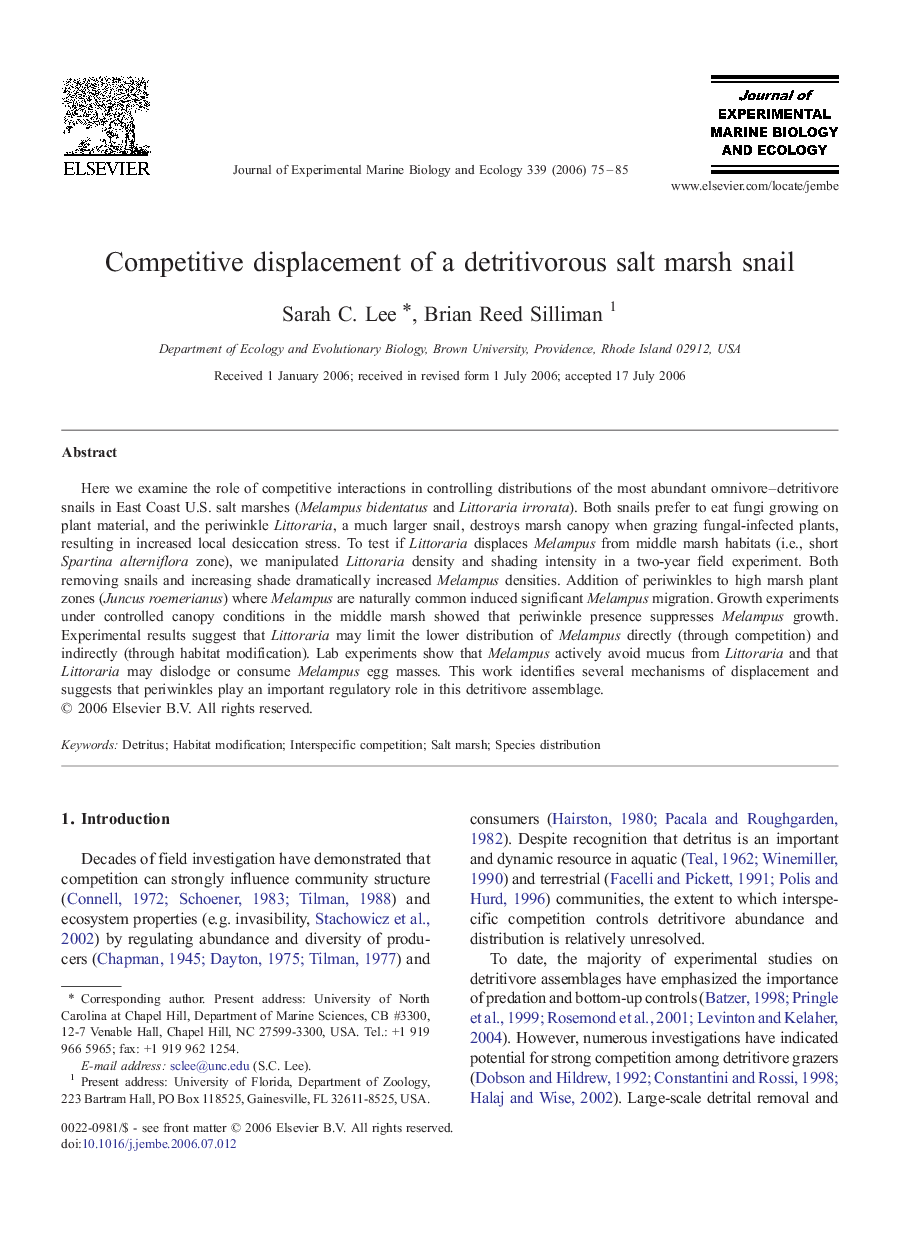| Article ID | Journal | Published Year | Pages | File Type |
|---|---|---|---|---|
| 4397909 | Journal of Experimental Marine Biology and Ecology | 2006 | 11 Pages |
Here we examine the role of competitive interactions in controlling distributions of the most abundant omnivore–detritivore snails in East Coast U.S. salt marshes (Melampus bidentatus and Littoraria irrorata). Both snails prefer to eat fungi growing on plant material, and the periwinkle Littoraria, a much larger snail, destroys marsh canopy when grazing fungal-infected plants, resulting in increased local desiccation stress. To test if Littoraria displaces Melampus from middle marsh habitats (i.e., short Spartina alterniflora zone), we manipulated Littoraria density and shading intensity in a two-year field experiment. Both removing snails and increasing shade dramatically increased Melampus densities. Addition of periwinkles to high marsh plant zones (Juncus roemerianus) where Melampus are naturally common induced significant Melampus migration. Growth experiments under controlled canopy conditions in the middle marsh showed that periwinkle presence suppresses Melampus growth. Experimental results suggest that Littoraria may limit the lower distribution of Melampus directly (through competition) and indirectly (through habitat modification). Lab experiments show that Melampus actively avoid mucus from Littoraria and that Littoraria may dislodge or consume Melampus egg masses. This work identifies several mechanisms of displacement and suggests that periwinkles play an important regulatory role in this detritivore assemblage.
